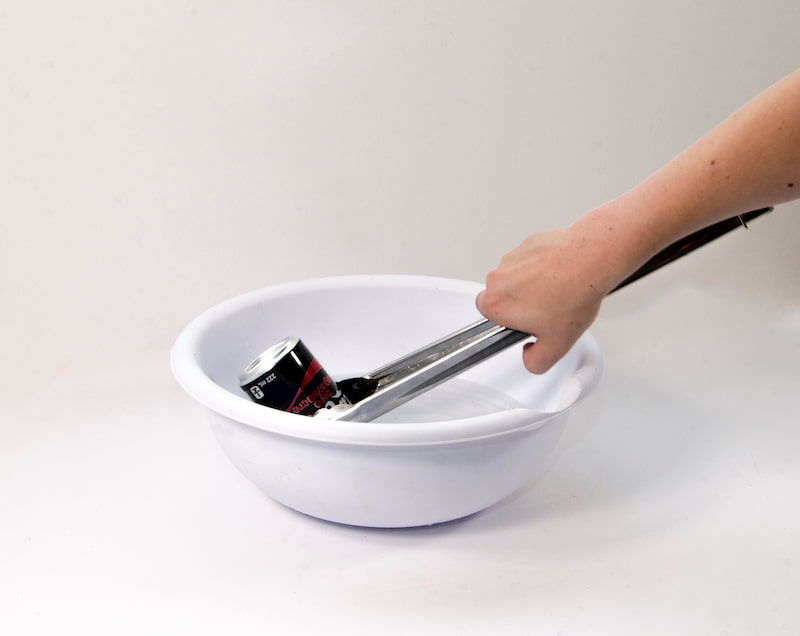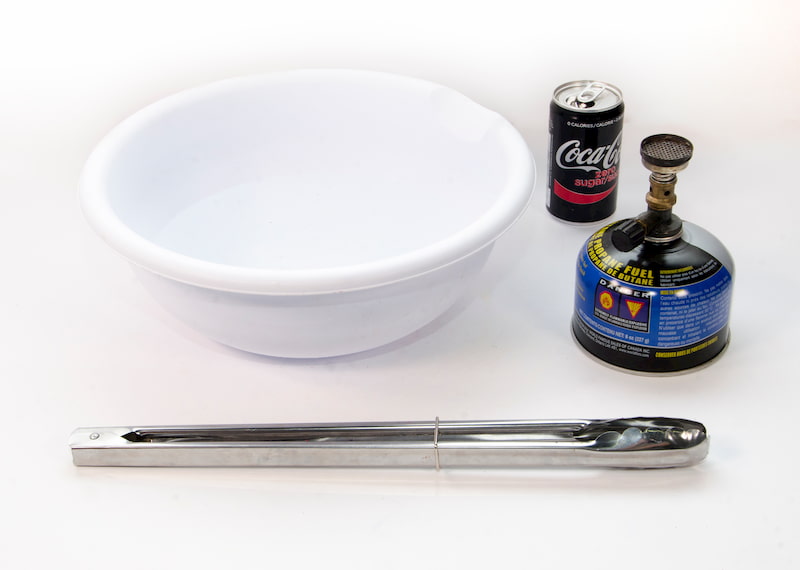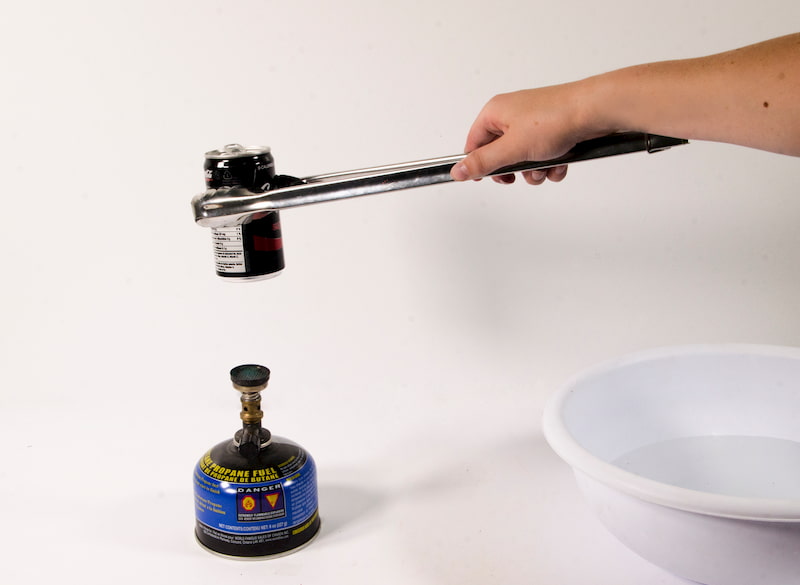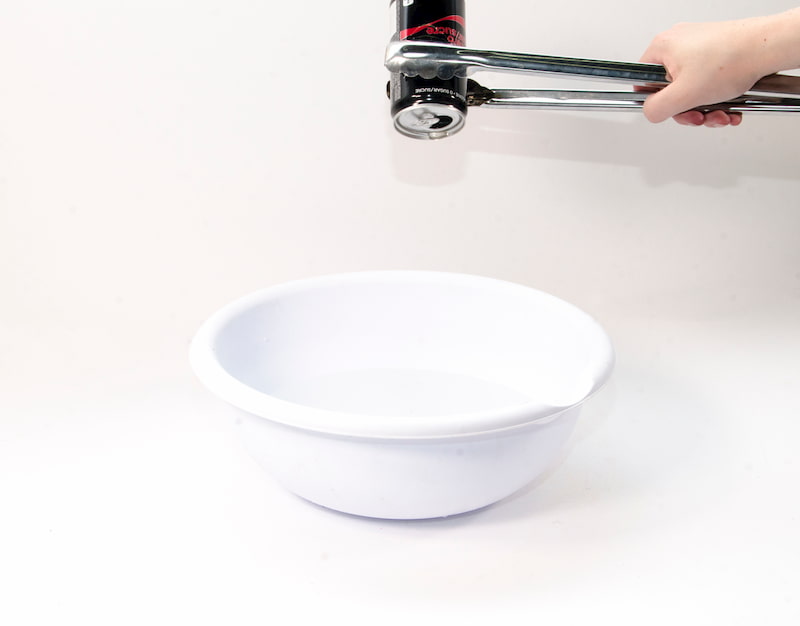Imploding can
Share :
What you need
- Empty soda can
- Bowl
- Cold water
- Ice
- Gas burner or Bunsen burner
- Tongs
Safety first!
When experimenting with fire, always make sure that there is adult supervision and help. You must have extinguishing materials (a fire extinguisher or blanket) nearby, in case there is an accident.
Make it
- Put a spoonful of tap water into the can. The exact amount is not important.
- Fill your bowl with cold water. Add ice as well.
- Place the can on the gas burner, or use the tongs to hold it over a Bunsen burner. Turn it on.
WARNING: Only adults should be doing this step. Make sure you have an extinguisher nearby and that nobody touches the burner while it’s on. - Wait until you hear the water boiling inside and see steam coming out. Wait about 30 seconds.
- Turn the burner off.
- Pick up the can using the tongs. Keep in mind that you will momentarily be flipping it upside down, so hold it in a way that makes turning it over easy. Make sure that you have a good grip on it.
Test it
Pick up the can, and quickly flip it upside down into the bowl of water. You will hear a loud noise and the can will be crushed into itself!
Explain it
When you heated up the water inside the can, it evaporated. The water vapour created pushed out the air that used to be in the can, and some of the vapour escaped as well. The remaining gas then became all that was taking up space in the can.
When you plunged the can into the cold water, the water vapour rapidly condensed (changed from a gas to a liquid). The amount of gas left only was enough to become a very small amount of water. Because you have blocked the hole at the top by plunging it into water, no air can enter to fill up that empty space. This leaves the pressure in the can to be lower than the pressure of the air and water around it. The force of this pressure is what pushes the can inward, crumpling it.
Observe it
When people go deep-sea diving, they have to go in a pressurized chamber that mimics the pressure on land. The weight of all that water makes the deep sea an extremely high pressure environment, and without protection, the gases in their bodies would compress so much that they would be crushed. They wouldn’t completely implode though, as most of the human body is made of water which cannot be compressed.
Go further
You will have probably noticed that the can is filled with water soon after you submerged it. Can you figure out why? Think about the fact that the air exerts pressure on the bowl of water.
You may also be interested in
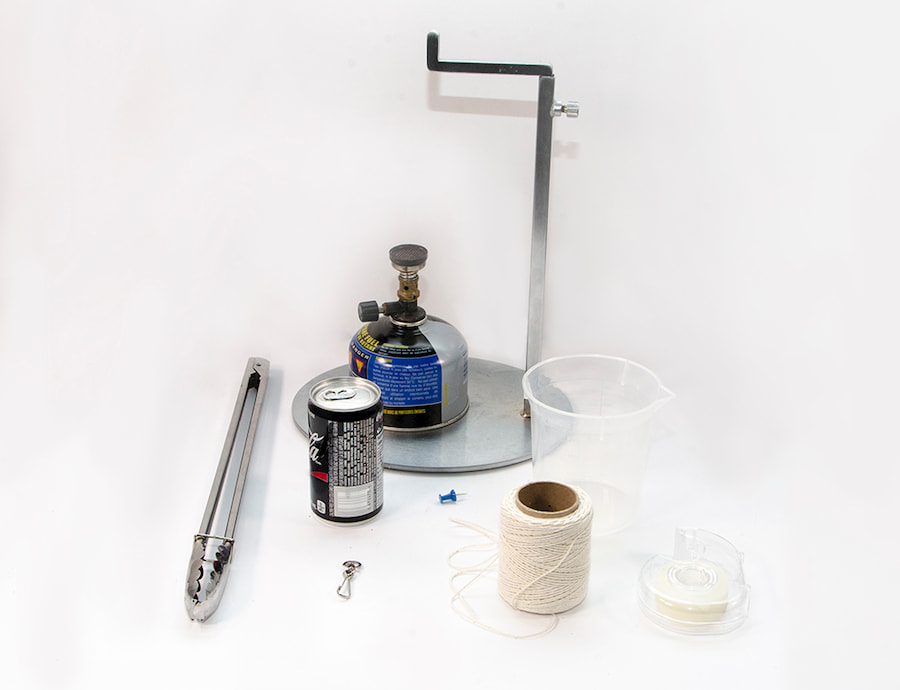
Soda can steam engine
In this activity, make your own soda can engine to see how steam energy can be transformed into kinetic energy, or movement.
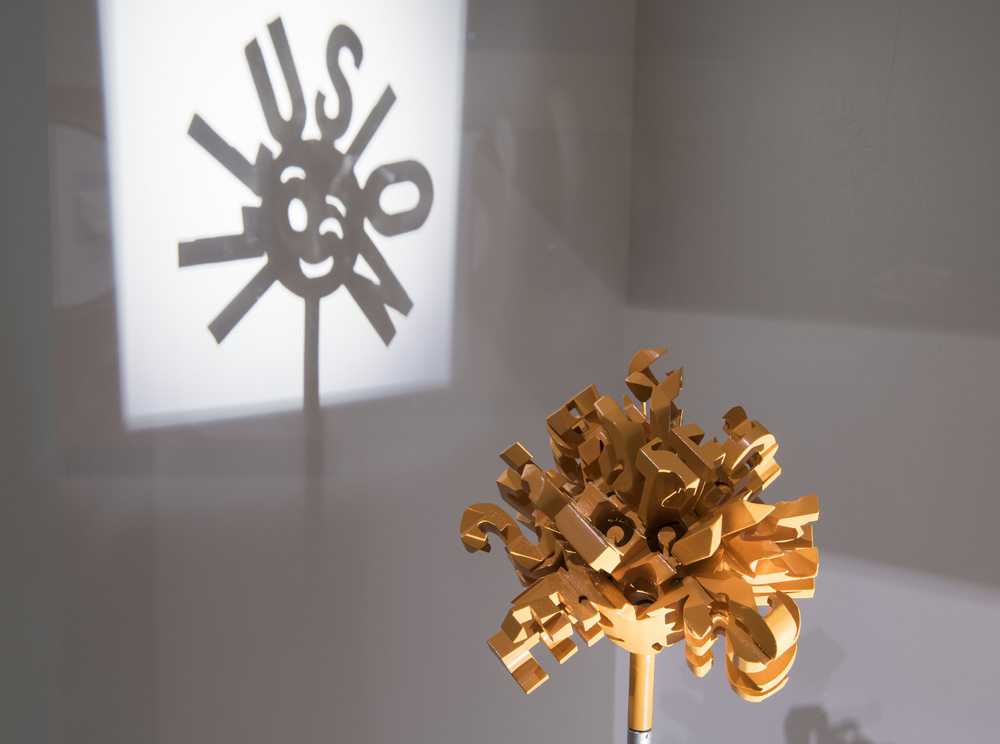
Illusions
Can we really believe everything that we see, hear, taste, smell and touch? As it turns out, maybe not; it’s easier than you might think to trick your mind.
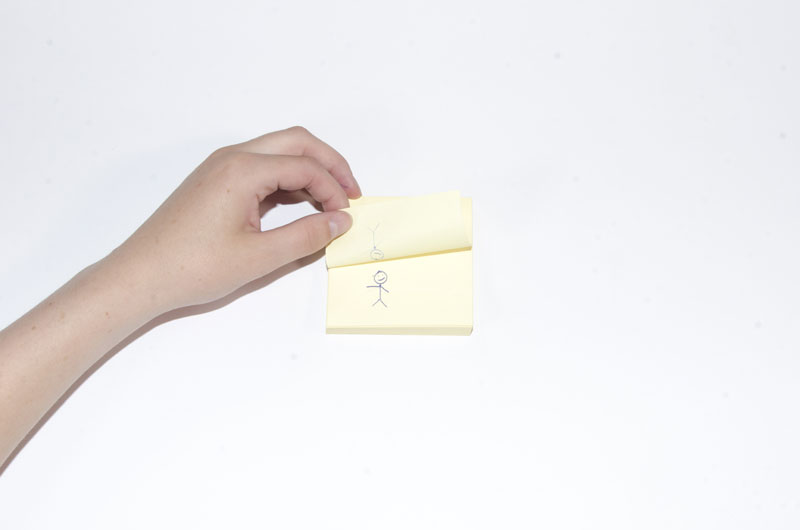
Flipbook
Did you know animators take advantage of a simple optical illusion to make their characters appear to move so smoothly? Although animators are helped with powerful computers, you can make your own cartoon animation using the same principles as the professionals!
